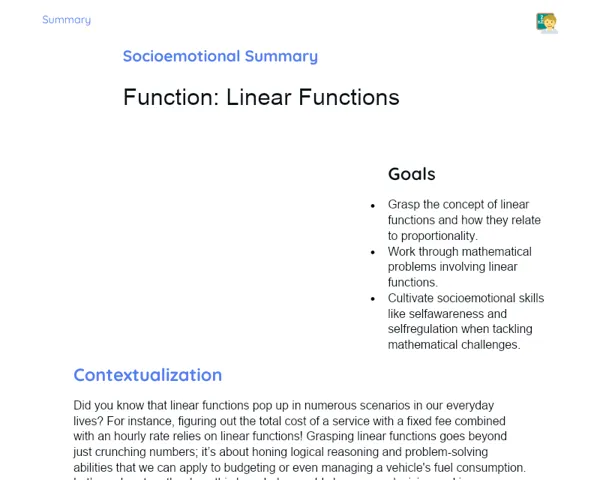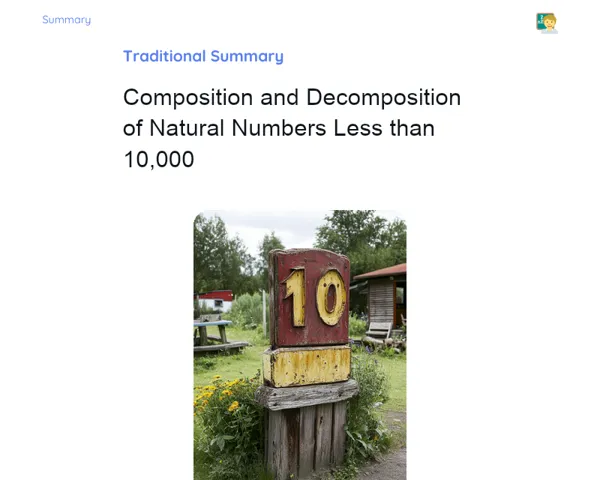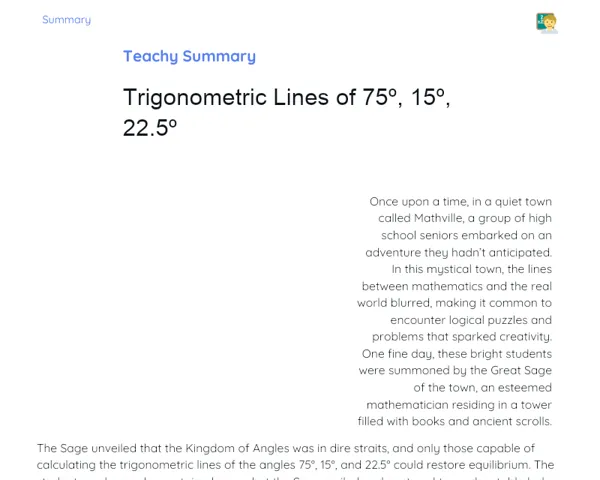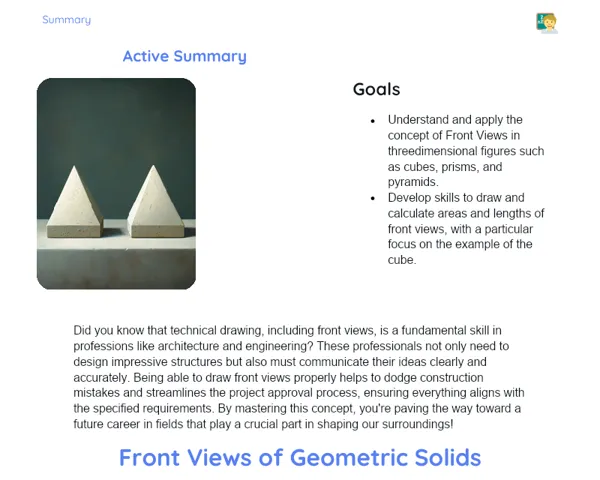Summary Tradisional | Translations of Plane Figures
Contextualization
Translation is a geometric transformation that involves moving a flat shape from one spot to another without changing its shape, size, or direction. In the Cartesian plane, we describe this movement using translation vectors, which show the direction and distance of the shift. Translation is one of the fundamental geometric transformations, alongside rotation, reflection, and dilation, and is key to studying symmetries and geometric patterns.
A practical example of translation can be seen when you move a piece of furniture from one corner of a room to another. The item keeps its original characteristics, but its position changes. Similarly, when translating a geometric figure in the Cartesian plane, we apply a translation vector to its coordinates, resulting in a new location for the shape while maintaining its core properties, like angles and lengths.
To Remember!
Defining Translation
Translation is a geometric transformation that moves a flat shape from one position to another. During translation, the figure keeps its original properties, such as shape, size, and direction, meaning it doesn’t get larger, rotated, or stretched. You can think of translation as a straightforward movement of the shape along a vector that shows the direction and how far it needs to go.
In the Cartesian plane, translation is represented by vectors, which have two parts: one indicating movement in the x direction and another in the y direction. For instance, a translation vector (3, 2) means that the shape should move 3 units to the right and 2 units upwards.
Using vectors helps us describe translation mathematically and lets us accurately adjust the coordinates of points on the original shape. When a figure is translated, each point of the original shape moves according to the translation vector, leading to a new position for each point.
-
Translation is the movement of a shape in the plane without changing its shape, size, or direction.
-
It is represented by vectors that show the direction and distance of the movement.
-
Each point of the original shape moves according to the translation vector.
Translation Vectors
Translation vectors are essential tools for describing how shapes move in the Cartesian plane. A translation vector is defined by two parts: one for horizontal movement (x) and another for vertical movement (y). These vectors let us clearly specify how and where we move a shape.
For example, if we want to translate a shape 5 units to the right and 3 units up, we use the translation vector (5, 3). This vector explains how each point of the original shape will move 5 units to the right and 3 units upwards. We apply the translation vector by adding its components to the coordinates of the original points of the shape.
Translation vectors are particularly useful where we need to make consistent and repetitive movements, like when creating geometric patterns or animating objects in computer graphics.
-
Translation vectors consist of two parts: one for the x direction and another for the y direction.
-
They indicate the direction and distance of the shape's movement.
-
To use the vector, we add its parts to the coordinates of the points of the shape.
Characteristics of Translation
Translation comes with several key properties that remain intact during the movement of the shape. One major property is that angles and lengths are kept the same. This means that after translation, the measurements of the sides and angles of the shape do not change.
Another important property is that parallel lines maintain their parallelism. If two lines are parallel in the original shape, they stay parallel after translation. Additionally, translation preserves congruence, meaning the original shape and the translated shape are congruent, as they have the same shape and size.
These properties make translation a powerful tool in geometry, as they allow shapes to be moved accurately without changing their fundamental features. Grasping these properties is crucial for tackling geometric problems and for real-world applications in design and engineering.
-
Translation keeps angles and lengths the same.
-
It maintains the parallelism of lines.
-
The original and translated shapes are congruent.
Real-World Uses of Translation
Translation has a wide range of applications, from education to the tech world. In education, translation is a key tool for teaching geometry and symmetry. It helps students grasp how shapes can be shifted in the plane without losing their essential properties.
In computer graphics and animation, translation is used to move objects smoothly and reliably. For instance, when a character slides from one spot to another in an animation, translation helps to compute the character's new position in each frame.
In graphic design, translation is used to create repeating patterns, like textures and prints. By systematically translating a shape, designers can create patterns that repeat in a harmonious and visually appealing way. Translation is also vital in civil engineering and architecture, where it aids in placing objects and structures carefully in plans and designs.
-
Translation is essential in teaching geometry.
-
It's used in computer graphics and animation to move objects.
-
It's applied in graphic design to produce repetitive patterns.
Key Terms
-
Translation: The movement of a shape in the plane without changing its shape, size, or direction.
-
Translation Vectors: Tools that specify the direction and distance of a shape's movement.
-
Cartesian Plane: A coordinate system used to describe the positions of points and shapes in the plane.
-
Congruence: A property of shapes that have the same shape and size.
-
Parallelism: A property of lines that stay equidistant and never cross each other.
Important Conclusions
Translation is a geometric transformation that involves shifting a flat shape from one position to another without changing its shape, size, or direction. In our lesson, we explored what translation means, how to use translation vectors, and the properties that stay the same during movement, like angles and lengths. We also looked at practical examples of translation through problems on the Cartesian plane and in everyday scenarios, such as animations and graphic design.
Grasping the properties of translation is vital for solving geometric challenges and applying these concepts in various fields, from education to technology. The preservation of angles, lengths, and parallel lines makes translation a valuable tool for moving shapes accurately without distorting their characteristics. As students master these concepts, they can explore practical and creative uses in different areas.
The knowledge gained about translation is useful beyond the classroom. By understanding how to use translation vectors and recognizing the involved properties, students will be equipped to tackle geometric challenges and apply these skills in future projects and activities. We encourage students to continue exploring the topic and practicing with different shapes and translation vectors to enhance their understanding.
Study Tips
-
Practice drawing and translating various geometric shapes in the Cartesian plane using different translation vectors.
-
Use interactive geometry software or drawing applications to visualize and experiment with translations.
-
Complete additional problems and exercises in textbooks or online resources to strengthen your grasp of translations.



